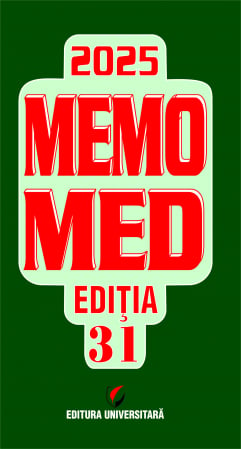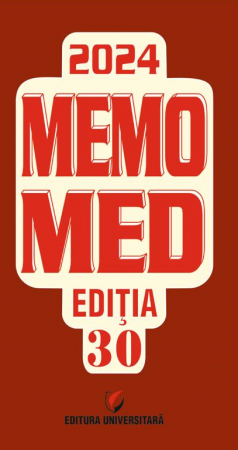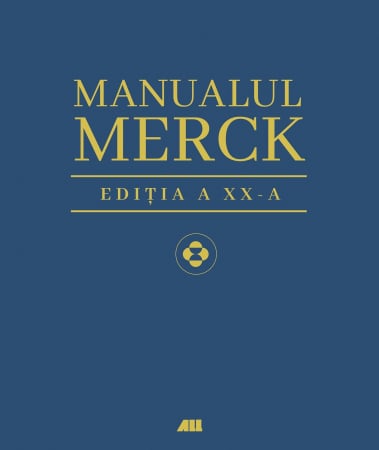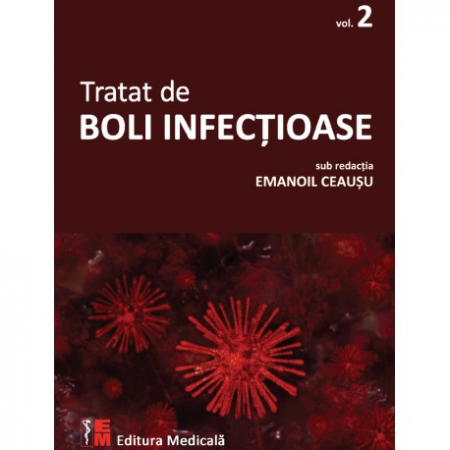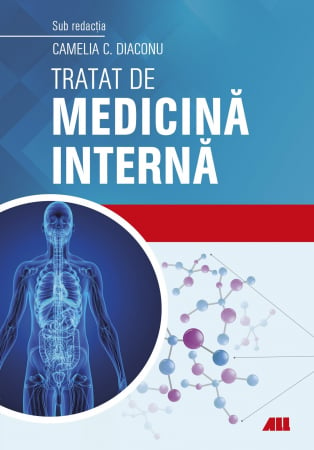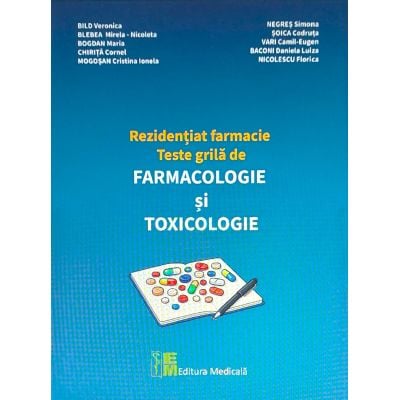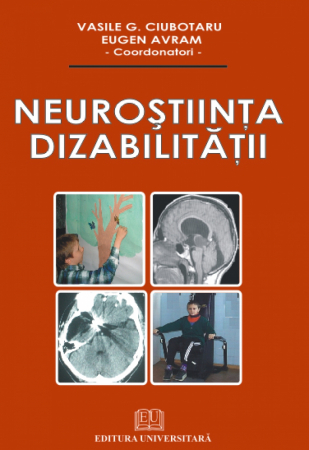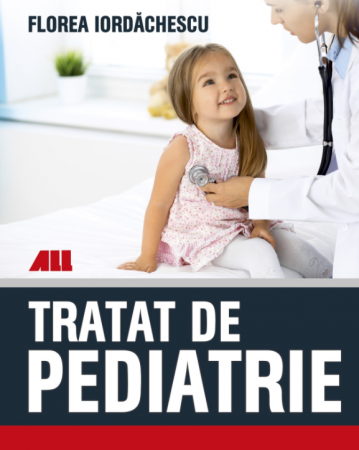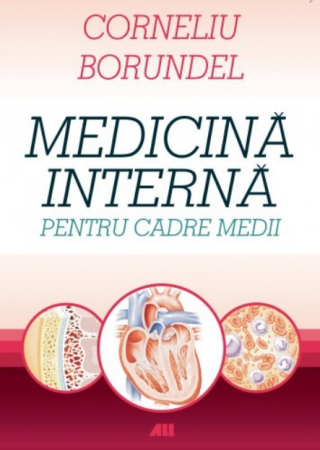Manuscript proposals: [email protected] / 0745 204 115 //// Tracking orders Individuals / Sales: 0745 200 357 / Orders Legal entities: 0721 722 783
Publisher: Editura Universitară
Author: Dumitru Dobrescu
ISBN: 978-606-591-905-1
DOI: 10.5682/9786065919051
Publisher year: 2014
Edition: II, revizuita si adaugita
Pages: 408
Product Code:
9786065919051
Do you need help?
0745 200 357
- Description
- Download (1)
- Authors
- Content
- More details
- Reviews (0)
HOMEOPATHIC PHARMACOLOGY HAS A TRIPLE ROLE
1. SCIENTIFIC
It contains all the knowledge of Homeopathy, accumulated in the over 200 years of existence, presented for the first time, ordered and structured according to the only scientific, logical, pharmacological criterion, knowing that the medicine is the basis on which homeopathy is based.
2. DIDACTIC
It allows the study and assimilation of homeopathy in a rational way and in a shorter time.
3. PRACTICAL, PHARMACOTHERAPY
Provides a working tool for pharmacotherapeutic practice, facilitating drug selection operations based on the law of similarity.
1. SCIENTIFIC
It contains all the knowledge of Homeopathy, accumulated in the over 200 years of existence, presented for the first time, ordered and structured according to the only scientific, logical, pharmacological criterion, knowing that the medicine is the basis on which homeopathy is based.
2. DIDACTIC
It allows the study and assimilation of homeopathy in a rational way and in a shorter time.
3. PRACTICAL, PHARMACOTHERAPY
Provides a working tool for pharmacotherapeutic practice, facilitating drug selection operations based on the law of similarity.
-
Homeopathic Pharmacology (ecological) - Volume II - Respiratory System
Download
DUMITRU DOBRESCU
SINGLE AUTHOR:
- Pharmacodynamics. Practical works, Didactic and Pedagogical Publishing House, Bucharest, 1967 (365 pages).
- Pharmacodynamics, Didactic and Pedagogical Publishing House, Bucharest, 1970 (556 pages).
- General pharmacodynamics. Scheduled education manual, Didactic and Pedagogical Publishing House, Bucharest, 1972 (204 pages).
- Pharmacodynamics. Second revised edition, Didactic and Pedagogical Publishing House, Bucharest, 1977 (588 pages).
- Pharmacotherapy, Medical Publishing House, Bucharest, 1981, (1053 pages). Victor Babes Award of the Romanian Academy. The book has an original structure and contains the chapter "Pharmacoepidemiology", for the first time in the international literature.
- Practical Pharmacotherapy, Medical Publishing House, Bucharest, 1989 (2 vols., 1058 pages).
- Gerontopharmacology, Mondan Publishing House, Bucharest, 1995 (369 pages).
- General homeopathic pharmacology, Minesan Publishing House, Bucharest, 2007 (267 pages) The first book with this title in the international medical literature - General Homeopathic Pharmacology. Edit. Tarus Media, Bucharest, 2008 (271 pages)
- Pharmacologie Homeopathique Générale, Editura Similia, Lyon, 2011.
- Homeopathic Pharmacology, vol. II, Respiratory System, Minesan Publishing House, Bucharest, 2009.
- Return to nature, Editura Universitara Publishing House, Bucharest, 2010.
FIRST AUTHOR:
- Pharmacology. Practical works, IMF Bucharest Publishing House, 1971, (300 pages)
- Combination of drugs. Pharmacodynamic incompatibilities, Medical Publishing House, Bucharest, 1971 (183 pages). The first book of its kind in international literature
- Medicines for the treatment of diseases of the digestive system, Minesan Publishing House, Bucharest, 2000 (320 pages)
- Memomed. Pharmacology Memorandum. Pharmacotherapeutic guide, Minesan Publishing House, Bucharest, 17 annual editions 1995–2011 (each edition with over 1000 pages).
COAUTHOR:
- Pharmacology. Practical works, IMF Publishing House Bucharest 1959.
- Romanian pharmaceutical products, Medical Publishing House, Bucharest, 1964 (776 pages). 12 chapters.
- Recent advances in medical therapeutics, Medical Publishing House, Bucharest, 1965. Chapter "Enzymes in therapeutics".
- Pharmacology. Manual, Didactic and Pedagogical Publishing House, Bucharest, 1965.
- Romanian pharmaceutical products, 2nd revised edition, Medical Publishing House, Bucharest, 1970.
- Medical therapy, under red. Radu Paun, Medical Publishing House, Bucharest, 1982. Chapter "Drug Interactions".
SINGLE AUTHOR:
- Pharmacodynamics. Practical works, Didactic and Pedagogical Publishing House, Bucharest, 1967 (365 pages).
- Pharmacodynamics, Didactic and Pedagogical Publishing House, Bucharest, 1970 (556 pages).
- General pharmacodynamics. Scheduled education manual, Didactic and Pedagogical Publishing House, Bucharest, 1972 (204 pages).
- Pharmacodynamics. Second revised edition, Didactic and Pedagogical Publishing House, Bucharest, 1977 (588 pages).
- Pharmacotherapy, Medical Publishing House, Bucharest, 1981, (1053 pages). Victor Babes Award of the Romanian Academy. The book has an original structure and contains the chapter "Pharmacoepidemiology", for the first time in the international literature.
- Practical Pharmacotherapy, Medical Publishing House, Bucharest, 1989 (2 vols., 1058 pages).
- Gerontopharmacology, Mondan Publishing House, Bucharest, 1995 (369 pages).
- General homeopathic pharmacology, Minesan Publishing House, Bucharest, 2007 (267 pages) The first book with this title in the international medical literature - General Homeopathic Pharmacology. Edit. Tarus Media, Bucharest, 2008 (271 pages)
- Pharmacologie Homeopathique Générale, Editura Similia, Lyon, 2011.
- Homeopathic Pharmacology, vol. II, Respiratory System, Minesan Publishing House, Bucharest, 2009.
- Return to nature, Editura Universitara Publishing House, Bucharest, 2010.
FIRST AUTHOR:
- Pharmacology. Practical works, IMF Bucharest Publishing House, 1971, (300 pages)
- Combination of drugs. Pharmacodynamic incompatibilities, Medical Publishing House, Bucharest, 1971 (183 pages). The first book of its kind in international literature
- Medicines for the treatment of diseases of the digestive system, Minesan Publishing House, Bucharest, 2000 (320 pages)
- Memomed. Pharmacology Memorandum. Pharmacotherapeutic guide, Minesan Publishing House, Bucharest, 17 annual editions 1995–2011 (each edition with over 1000 pages).
COAUTHOR:
- Pharmacology. Practical works, IMF Publishing House Bucharest 1959.
- Romanian pharmaceutical products, Medical Publishing House, Bucharest, 1964 (776 pages). 12 chapters.
- Recent advances in medical therapeutics, Medical Publishing House, Bucharest, 1965. Chapter "Enzymes in therapeutics".
- Pharmacology. Manual, Didactic and Pedagogical Publishing House, Bucharest, 1965.
- Romanian pharmaceutical products, 2nd revised edition, Medical Publishing House, Bucharest, 1970.
- Medical therapy, under red. Radu Paun, Medical Publishing House, Bucharest, 1982. Chapter "Drug Interactions".
Preface / 5
Contents / 9
Principles for the elaboration of homeopathic pharmacology / 15
PART I
Homeopathic pharmacology of respiratory signs and symptoms / 23
1. Medicines of the respiratory system / 27
1.1. Generalities / 27
1.2. Pharmacodynamic bases / 28
1.3. Pharmacotherapeutic bases / 42
2. Homeopathic medicines against nasal disorders / 47
2.1. Pathophysiological bases / 47
2.2. Pharmacodynamic bases / 48
2.3. Pharmacotherapeutic bases / 57
2.3.1. Pharmacotherapy of symptoms / 57
2.3.2. Pharmacotherapy of nosological entities / 57
2.3.2.1. Banal acute rhinitis (cough, acute coryza) / 57
2.3.2.2. Chronic rhinitis / 59
2.3.2.3. Spasmodic rhinitis (allergic) / 60
2.3.2.4. Fetal atrophic rhinitis (loud) / 62
2.3.2.5. Acute and chronic sinusitis / 63
2.3.2.6. Nasosinusal polyposis / 65
2.3.2.7. Epistaxis / 66
3. Homeopathic medicines against pharyngeal disorders / 69
3.1. Pathophysiological bases / 69
3.2. Pharmacodynamic bases / 69
3.3. Pharmacotherapeutic bases / 75
3.3.1. Pharmacotherapy of symptoms / 75
3.3.2. Pharmacotherapy of nosological entities / 75
3.3.2.1. Simple catarrhal angina (erythematous, virotic, red) / 75
3.3.2.2. Erythematopultaceous angina (follicular, white, bacterial) / 76
3.3.2.3. Pharyngitis / 76
3.3.2.4. Pharyngeal paresthesias / 77
4. Homeopathic medicines against disorders of the larynx and trachea / 81
4.1. Pathophysiological bases / 81
4.2. Pharmacodynamic bases / 82
4.3. Pharmacotherapeutic bases / 91
4.3.1. Pharmacotherapy of symptoms / 91
4.3.2. Pharmacotherapy of nosological entities / 91
4.3.2.1. Acute laryngitis / 91
4.3.2.2. Chronic laryngitis / 93
4.3.2.3. Acute tracheitis / 93
5. Homeopathic medicines against disorders of the lungs and pleura / 97
5.1. Pathophysiological bases / 97
5.2. Pharmacodynamic bases / 97
5.3. Pharmacotherapeutic bases / 105
5.3.1. Pharmacotherapy of symptoms / 105
5.3.2. Pharmacotherapy of nosological entities / 105
5.3.2.1. Acute bronchitis / 105
5.3.2.2. Chronic bronchitis / 107
5.3.2.3. Pneumonia / 108
5.3.2.4. Bronchopneumonia / 111
5.3.2.5. Acute pleurisy / 112
6. Homeopathic medicines against respiratory disorders / 115
6.1. Pathophysiological bases / 115
6.2. Pharmacodynamic bases / 118
6.3. Pharmacotherapeutic bases / 126
6.3.1. Pharmacotherapy of symptoms / 127
6.3.2. Pharmacotherapy of nosological entities / 127
6.3.2.1. Asthma / 127
7. Homeopathic medicines for the treatment of cough / 133
7.1. Pathophysiological bases / 133
7.2. Pharmacodynamic bases / 136
7.3. Pharmacotherapeutic bases / 158
8. Expectorant / 161
8.1. Pathophysiological bases / 161
8.2. Pharmacodynamic bases / 162
8.3. Pharmacotherapeutic bases / 172
Part II a
Monographs of homeopathic pharmacology of the respiratory system / 175
9. Monographs of homeopathic pharmacology / 177
9.1. Aconitum / 179
9.2. Alium cepa / 184
9.3. Ammonium carbonicum / 187
9.4. Antimonium tartaricum / 190
9.5. Argentum metallicum / 194
9.6. Argentum nitricum / 197
9.7. Arsenicum album / 200
9.8. Arsenicum iodatum / 205
9.9. Arum triphyllum / 208
9.10. Asclepias / 211
9.11. Aurum / 213
9.12. Belladonna / 216
9.13. Bromium / 221
9.14. Bryonia / 224
9.15. Carbonic limestone / 228
9.16. Sulfur limestone / 232
9.17. Carbo vegetabilis / 234
9.18. Causticum / 237
9.19. Chamomilla / 241
9.20. China / 244
9.21. Coccus cacti / 247
9.22. Coralium rubrum / 250
9.23. Copper / 252
9.24. Drosera / 255
9.25. Elaps / 258
9.26. Erigeron / 260
9.27. Eupatorium / 262
9.28. Euphrasia / 265
9.29. Ferrum phosphoricum / 268
9.30. Hamamelis / 271
9.31. Hepar sulfuris / 274
9.32. Hydrastis / 278
9.33. Hyosciamus / 281
9.34. Ignatia / 284
9.35. Iodine / 287
9.36. Ipeca / 291
9.37. Kalium bichromicum / 295
9.38. Kalium carbonicum / 299
9.39. Kalium iodatum / 303
9.40. Kalium sulfuricum / 306
9.41. Laurocerasus / 308
9.42. Lycopodium / 310
9.43. Manganum / 315
9.44. Mephitis / 318
9.45. Mercurius solubilis / 320
9.46. Mercurius vivus / 321
9.47. Millefolium / 325
9.48. Naja / 328
9.49. Naphtalinum / 330
9.50. Natrum muriaticum / 332
9.51. Nitricum acidum / 336
9.52. Nux vomica / 339
9.53. Phosphorus / 343
9.54. Psorinum / 348
9.55. Pulsatilla / 352
9.56. Ranunculus bulbosus / 356
9.57. Rumex / 359
9.58. Sabadilla / 362
9.59. Sambucus / 365
9.60. Sanguinaria / 368
9.61. Scilla / 372
9.62. Senecio / 375
9.63. Senega / 377
9.64. Sepia / 380
9.65. Silica / 384
9.66. Sponge / 388
9.67. Stannum metallicum / 391
9.68. Sticta pulmonaria / 394
9.69. Sulfur / 396
9.70. Teucrium / 400
9.71. Tuberculinum / 402
9.72. Viola odorata / 405
Bibliography / 407
Contents / 9
Principles for the elaboration of homeopathic pharmacology / 15
PART I
Homeopathic pharmacology of respiratory signs and symptoms / 23
1. Medicines of the respiratory system / 27
1.1. Generalities / 27
1.2. Pharmacodynamic bases / 28
1.3. Pharmacotherapeutic bases / 42
2. Homeopathic medicines against nasal disorders / 47
2.1. Pathophysiological bases / 47
2.2. Pharmacodynamic bases / 48
2.3. Pharmacotherapeutic bases / 57
2.3.1. Pharmacotherapy of symptoms / 57
2.3.2. Pharmacotherapy of nosological entities / 57
2.3.2.1. Banal acute rhinitis (cough, acute coryza) / 57
2.3.2.2. Chronic rhinitis / 59
2.3.2.3. Spasmodic rhinitis (allergic) / 60
2.3.2.4. Fetal atrophic rhinitis (loud) / 62
2.3.2.5. Acute and chronic sinusitis / 63
2.3.2.6. Nasosinusal polyposis / 65
2.3.2.7. Epistaxis / 66
3. Homeopathic medicines against pharyngeal disorders / 69
3.1. Pathophysiological bases / 69
3.2. Pharmacodynamic bases / 69
3.3. Pharmacotherapeutic bases / 75
3.3.1. Pharmacotherapy of symptoms / 75
3.3.2. Pharmacotherapy of nosological entities / 75
3.3.2.1. Simple catarrhal angina (erythematous, virotic, red) / 75
3.3.2.2. Erythematopultaceous angina (follicular, white, bacterial) / 76
3.3.2.3. Pharyngitis / 76
3.3.2.4. Pharyngeal paresthesias / 77
4. Homeopathic medicines against disorders of the larynx and trachea / 81
4.1. Pathophysiological bases / 81
4.2. Pharmacodynamic bases / 82
4.3. Pharmacotherapeutic bases / 91
4.3.1. Pharmacotherapy of symptoms / 91
4.3.2. Pharmacotherapy of nosological entities / 91
4.3.2.1. Acute laryngitis / 91
4.3.2.2. Chronic laryngitis / 93
4.3.2.3. Acute tracheitis / 93
5. Homeopathic medicines against disorders of the lungs and pleura / 97
5.1. Pathophysiological bases / 97
5.2. Pharmacodynamic bases / 97
5.3. Pharmacotherapeutic bases / 105
5.3.1. Pharmacotherapy of symptoms / 105
5.3.2. Pharmacotherapy of nosological entities / 105
5.3.2.1. Acute bronchitis / 105
5.3.2.2. Chronic bronchitis / 107
5.3.2.3. Pneumonia / 108
5.3.2.4. Bronchopneumonia / 111
5.3.2.5. Acute pleurisy / 112
6. Homeopathic medicines against respiratory disorders / 115
6.1. Pathophysiological bases / 115
6.2. Pharmacodynamic bases / 118
6.3. Pharmacotherapeutic bases / 126
6.3.1. Pharmacotherapy of symptoms / 127
6.3.2. Pharmacotherapy of nosological entities / 127
6.3.2.1. Asthma / 127
7. Homeopathic medicines for the treatment of cough / 133
7.1. Pathophysiological bases / 133
7.2. Pharmacodynamic bases / 136
7.3. Pharmacotherapeutic bases / 158
8. Expectorant / 161
8.1. Pathophysiological bases / 161
8.2. Pharmacodynamic bases / 162
8.3. Pharmacotherapeutic bases / 172
Part II a
Monographs of homeopathic pharmacology of the respiratory system / 175
9. Monographs of homeopathic pharmacology / 177
9.1. Aconitum / 179
9.2. Alium cepa / 184
9.3. Ammonium carbonicum / 187
9.4. Antimonium tartaricum / 190
9.5. Argentum metallicum / 194
9.6. Argentum nitricum / 197
9.7. Arsenicum album / 200
9.8. Arsenicum iodatum / 205
9.9. Arum triphyllum / 208
9.10. Asclepias / 211
9.11. Aurum / 213
9.12. Belladonna / 216
9.13. Bromium / 221
9.14. Bryonia / 224
9.15. Carbonic limestone / 228
9.16. Sulfur limestone / 232
9.17. Carbo vegetabilis / 234
9.18. Causticum / 237
9.19. Chamomilla / 241
9.20. China / 244
9.21. Coccus cacti / 247
9.22. Coralium rubrum / 250
9.23. Copper / 252
9.24. Drosera / 255
9.25. Elaps / 258
9.26. Erigeron / 260
9.27. Eupatorium / 262
9.28. Euphrasia / 265
9.29. Ferrum phosphoricum / 268
9.30. Hamamelis / 271
9.31. Hepar sulfuris / 274
9.32. Hydrastis / 278
9.33. Hyosciamus / 281
9.34. Ignatia / 284
9.35. Iodine / 287
9.36. Ipeca / 291
9.37. Kalium bichromicum / 295
9.38. Kalium carbonicum / 299
9.39. Kalium iodatum / 303
9.40. Kalium sulfuricum / 306
9.41. Laurocerasus / 308
9.42. Lycopodium / 310
9.43. Manganum / 315
9.44. Mephitis / 318
9.45. Mercurius solubilis / 320
9.46. Mercurius vivus / 321
9.47. Millefolium / 325
9.48. Naja / 328
9.49. Naphtalinum / 330
9.50. Natrum muriaticum / 332
9.51. Nitricum acidum / 336
9.52. Nux vomica / 339
9.53. Phosphorus / 343
9.54. Psorinum / 348
9.55. Pulsatilla / 352
9.56. Ranunculus bulbosus / 356
9.57. Rumex / 359
9.58. Sabadilla / 362
9.59. Sambucus / 365
9.60. Sanguinaria / 368
9.61. Scilla / 372
9.62. Senecio / 375
9.63. Senega / 377
9.64. Sepia / 380
9.65. Silica / 384
9.66. Sponge / 388
9.67. Stannum metallicum / 391
9.68. Sticta pulmonaria / 394
9.69. Sulfur / 396
9.70. Teucrium / 400
9.71. Tuberculinum / 402
9.72. Viola odorata / 405
Bibliography / 407
HOMEOPATHIC PHARMACOLOGY was born in 2007, with the publication of the book "GENERAL HOMEOPATHIC PHARMACOLOGY" with the undersigned as its author. The appearance of this book also represents the birth of a new medical science, that of homeopathic medicine.
The concept of homeopathic pharmacology is the result of logical thinking, which should have appeared a long time ago. The delay could have a simple explanation. In the more than 200 years of homeopathy, homeopaths have completely broken away from allopathy and other possible beneficial influences, and in the last over 100 years, since the existence of Allopathic Pharmacology, pharmacologists have ignored the existence of homeopathy, when they did not despise -or or abolished it.
The undersigned, being a doctor and pharmacist, professor of pharmacology, laboratory researcher and clinician, dissatisfied with the performance of allopathic medicines, as Hahnemann once, I also studied homepathy and practiced it since 1981. So far I have given about 20,000 homeopathy consultations.
As I enriched my theoretical knowledge and gained practical experience, my confidence in homeopathy increased and I decided to make my natural contribution to its progress.
For those who still doubt the effectiveness of homeopathy, I must emphasize that in my practical work, I have always had good results, fulfilling the three conditions, shown by Jouanny et al. (1985), for a homeopathic treatment to be possible and effective:
1. the lesion to be treated is reversible;
2. the patient to be able to react;
3. to have a susceptible substance: to cause a healthy individual a "similar suffering" and to trigger a salutary reaction in the patient.
The emergence and construction of homeopathic pharmacology is the natural result of the analysis I did of homeopathy, from the positions of pharmacology.
I developed the concept of homeopathic pharmacology in the mentioned book. Naturally, we started with the general part that clearly demonstrates the closeness between the two branches of pharmacology.
Normally, the chapters on special pharmacology of devices and systems follow. It is a huge job, sorting, option, ordering the plethora of existing data in homeopathic publications, the difficulty resulting both from the large number of data with different weights, and from the frequent contradictions and lack of objective evidence. Obviously, a special role in the selection was played by personal experience. I found it useful to output a volume for each device or system. These volumes can later be presented in 1-2 larger volumes. We started with the pharmacology of the respiratory system, given that the frequency of respiratory diseases is very high, that many respiratory ailments can be treated with homeopathic medicines, often with superior or equal results with allopathic medicines or the two types can be used in combination, in severe cases, obviously increasing the effectiveness of therapy.
In achieving what I set out to do, I found myself in the situation of the authors of the first books of allopathic pharmacology, over 150 years ago, with the mention that my mission is incomparably harder, due to the enormous number of existing data, which must selected. The authors of that time had few books on Medical Matter at their disposal. These included "medicinal substances", mostly vegetable products, few minerals or animals. These books were the forerunners of modern Pharmacognosy. The description of the substances included botanical and geographical origin, harvesting, description of the drug and its examination, identification of active substances and summary data on therapeutic use, as there was no experimental knowledge of pharmacology and clinical data were rudimentary.
Given the enormous effort made to develop the book and its originality, I considered it useful to further present the "Principles for the development of homeopathic pharmacology."
The writing of the book "General Homeopathic Pharmacology" suggested to me the need for a comparative analysis of the evolution of the two sciences of medicine, Allopathic Pharmacology and Homeopathic Pharmacology. I did such an analysis in the form of an essay "Medicine in the 21st Century", which I published in the volume Memomed 2009. The conclusions of the essay are very clear. Taking into account the laws of nature, the existence of the two types of drugs, allopathic and homeopathic, is an objective phenomenon. They have complementary relationships and must be used equally in therapeutics. Allopathy is only half of the therapy. The therapy will be complete only by supplementing with homeopathic medicine. This can be achieved by introducing homeopathic pharmacology in the curriculum of all medical schools and prescribing the two categories of drugs by all doctors, in the outpatient department and in hospitals, depending on the situation of each patient. Until the official introduction of homeopathic pharmacology in the plans in education, medical students may request optional courses and may learn homeopathic pharmacology as self-taught. Doctors, especially general practitioners, can take introductory courses and train themselves.
Specifically, in the therapeutic assistance of respiratory diseases, taking into account the potential of the two categories of drugs, I consider it logical and correct to do so. Mild cases should be treated only with homeopathic medicines. Medium and severe cases should be treated primarily, but not exclusively with allopathic drugs, to which homeopathic and allopathic drugs, respectively, should be associated. They will certainly have favorable consequences for alleviating the intensity of suffering, reducing the duration of the disease and the period of convalescence, avoiding or reducing complications.
I am convinced that, being the first book of this kind, in the international medical literature, it can and must be improved in the future, by me or by other authors. A good book, of this kind, can only be the work of several joint efforts. I send, in advance, thanks to those who will be happy to send me their observations, good or bad, and suggestions for changes for future volumes.
Bucharest, August 2009
Prof. Dr. Dobrescu
Corresponding member. of the Romanian Academy
Full member of the Academy of Medical Sciences
The concept of homeopathic pharmacology is the result of logical thinking, which should have appeared a long time ago. The delay could have a simple explanation. In the more than 200 years of homeopathy, homeopaths have completely broken away from allopathy and other possible beneficial influences, and in the last over 100 years, since the existence of Allopathic Pharmacology, pharmacologists have ignored the existence of homeopathy, when they did not despise -or or abolished it.
The undersigned, being a doctor and pharmacist, professor of pharmacology, laboratory researcher and clinician, dissatisfied with the performance of allopathic medicines, as Hahnemann once, I also studied homepathy and practiced it since 1981. So far I have given about 20,000 homeopathy consultations.
As I enriched my theoretical knowledge and gained practical experience, my confidence in homeopathy increased and I decided to make my natural contribution to its progress.
For those who still doubt the effectiveness of homeopathy, I must emphasize that in my practical work, I have always had good results, fulfilling the three conditions, shown by Jouanny et al. (1985), for a homeopathic treatment to be possible and effective:
1. the lesion to be treated is reversible;
2. the patient to be able to react;
3. to have a susceptible substance: to cause a healthy individual a "similar suffering" and to trigger a salutary reaction in the patient.
The emergence and construction of homeopathic pharmacology is the natural result of the analysis I did of homeopathy, from the positions of pharmacology.
I developed the concept of homeopathic pharmacology in the mentioned book. Naturally, we started with the general part that clearly demonstrates the closeness between the two branches of pharmacology.
Normally, the chapters on special pharmacology of devices and systems follow. It is a huge job, sorting, option, ordering the plethora of existing data in homeopathic publications, the difficulty resulting both from the large number of data with different weights, and from the frequent contradictions and lack of objective evidence. Obviously, a special role in the selection was played by personal experience. I found it useful to output a volume for each device or system. These volumes can later be presented in 1-2 larger volumes. We started with the pharmacology of the respiratory system, given that the frequency of respiratory diseases is very high, that many respiratory ailments can be treated with homeopathic medicines, often with superior or equal results with allopathic medicines or the two types can be used in combination, in severe cases, obviously increasing the effectiveness of therapy.
In achieving what I set out to do, I found myself in the situation of the authors of the first books of allopathic pharmacology, over 150 years ago, with the mention that my mission is incomparably harder, due to the enormous number of existing data, which must selected. The authors of that time had few books on Medical Matter at their disposal. These included "medicinal substances", mostly vegetable products, few minerals or animals. These books were the forerunners of modern Pharmacognosy. The description of the substances included botanical and geographical origin, harvesting, description of the drug and its examination, identification of active substances and summary data on therapeutic use, as there was no experimental knowledge of pharmacology and clinical data were rudimentary.
Given the enormous effort made to develop the book and its originality, I considered it useful to further present the "Principles for the development of homeopathic pharmacology."
The writing of the book "General Homeopathic Pharmacology" suggested to me the need for a comparative analysis of the evolution of the two sciences of medicine, Allopathic Pharmacology and Homeopathic Pharmacology. I did such an analysis in the form of an essay "Medicine in the 21st Century", which I published in the volume Memomed 2009. The conclusions of the essay are very clear. Taking into account the laws of nature, the existence of the two types of drugs, allopathic and homeopathic, is an objective phenomenon. They have complementary relationships and must be used equally in therapeutics. Allopathy is only half of the therapy. The therapy will be complete only by supplementing with homeopathic medicine. This can be achieved by introducing homeopathic pharmacology in the curriculum of all medical schools and prescribing the two categories of drugs by all doctors, in the outpatient department and in hospitals, depending on the situation of each patient. Until the official introduction of homeopathic pharmacology in the plans in education, medical students may request optional courses and may learn homeopathic pharmacology as self-taught. Doctors, especially general practitioners, can take introductory courses and train themselves.
Specifically, in the therapeutic assistance of respiratory diseases, taking into account the potential of the two categories of drugs, I consider it logical and correct to do so. Mild cases should be treated only with homeopathic medicines. Medium and severe cases should be treated primarily, but not exclusively with allopathic drugs, to which homeopathic and allopathic drugs, respectively, should be associated. They will certainly have favorable consequences for alleviating the intensity of suffering, reducing the duration of the disease and the period of convalescence, avoiding or reducing complications.
I am convinced that, being the first book of this kind, in the international medical literature, it can and must be improved in the future, by me or by other authors. A good book, of this kind, can only be the work of several joint efforts. I send, in advance, thanks to those who will be happy to send me their observations, good or bad, and suggestions for changes for future volumes.
Bucharest, August 2009
Prof. Dr. Dobrescu
Corresponding member. of the Romanian Academy
Full member of the Academy of Medical Sciences
If you want to express your opinion about this product you can add a review.
write a review

6359.png)
![Homeopathic Pharmacology (ecological) - Volume II - Respiratory System - Dumitru Dobrescu [1] Homeopathic Pharmacology (ecological) - Volume II - Respiratory System - Dumitru Dobrescu [1]](https://gomagcdn.ro/domains/editurauniversitara.ro/files/product/large/farmacologie-homeopata-ecologica-volumul-ii-aparatul-respirator-1166-175711.jpg)

